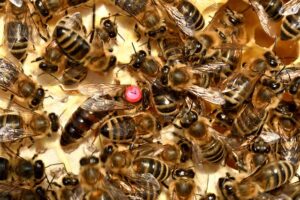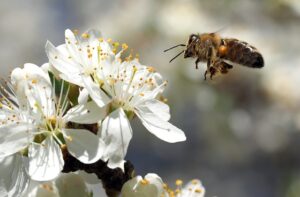Family structure of a beehive colony
Understanding the Social Hierarchy of Bees
Bees are one of the most fascinating creatures on earth, and their social structure is just as interesting as their behavior. Bees live in large groups called colonies, which are made up of thousands of individual bees. Within the colony, there is a complex social hierarchy, which is essential for the survival of the entire group. In this article, we’ll explore the family structure of bees and how it contributes to the success of the colony.
The Queen Bee
At the top of the social hierarchy in a bee colony is the queen bee. The queen is the only bee in the colony that is capable of laying eggs, and she is responsible for the overall health and well-being of the entire colony.

The queen bee is typically larger than the other bees in the colony and can live for several years.
The queen bee is born and raised in the colony, and she is fed a special diet of royal jelly. This special diet allows her to develop fully and become a reproductive female. Once she is fully developed, the queen bee will mate with several male bees, or drones, in a process called a “mating flight.” The queen bee can store the sperm from these mating flights for several years, which allows her to lay eggs throughout her entire life.
Worker Bees
The majority of bees in a colony are worker bees.

These are female bees that are responsible for collecting nectar and pollen, caring for the queen and her offspring, and maintaining the hive. Worker bees are sterile, meaning they cannot lay eggs, but they are essential to the survival of the colony.
Worker bees are born from fertilized eggs, and they develop through several stages before they emerge as adults. Once they reach adulthood, they will spend their entire lives working within the hive. Worker bees have a variety of tasks, including cleaning the hive, feeding the queen and her offspring, and guarding the colony from predators.
Drone Bees
Male bees in a colony are called drones. Drones are larger than worker bees and have large eyes, which help them to locate queens during mating flights.
Drones are only capable of mating, and they do not collect nectar or pollen, nor do they help to care for the queen or her offspring.
Drones are born from unfertilized eggs, and they do not have a father. They develop through several stages before emerging as adults, and their sole purpose is to mate with the queen bee. Once they have mated with the queen, they will die shortly after.
Conclusion
The family structure of bees is complex and essential to the survival of the colony. The queen bee is responsible for laying eggs and maintaining the health of the colony, while worker bees collect nectar and pollen, care for the queen and her offspring, and maintain the hive. Male bees, or drones, are responsible for mating with the queen bee and ensuring the survival of the colony.
Understanding the social hierarchy of bees can help us to appreciate the importance of these fascinating creatures. Bees play a critical role in pollinating our crops and maintaining the biodiversity of our planet. By learning more about their family structure, we can better understand and protect these important insects.

